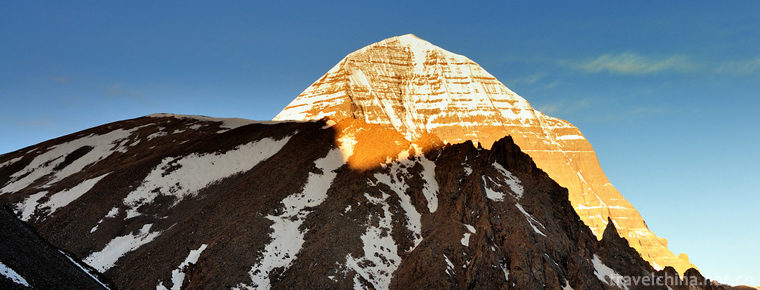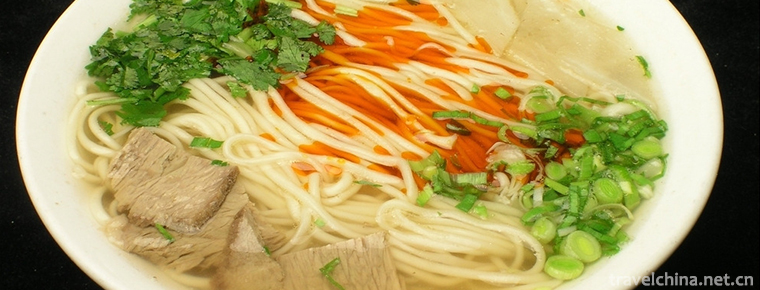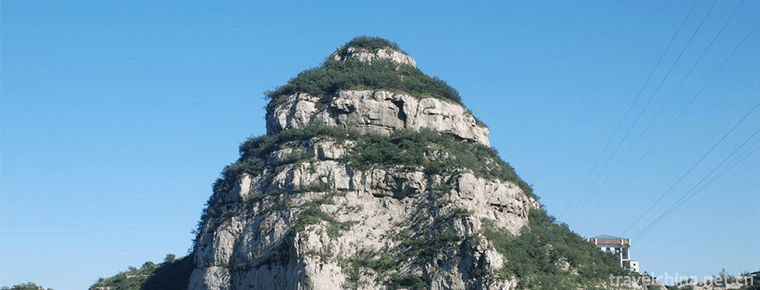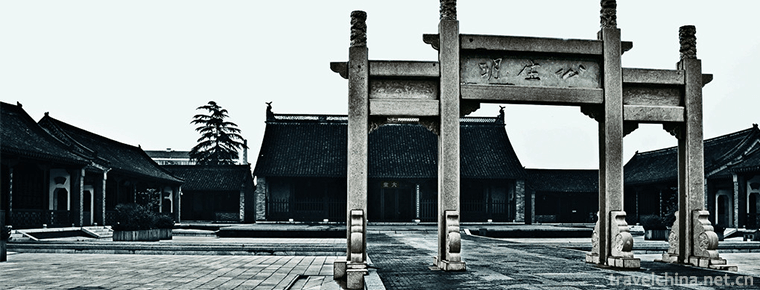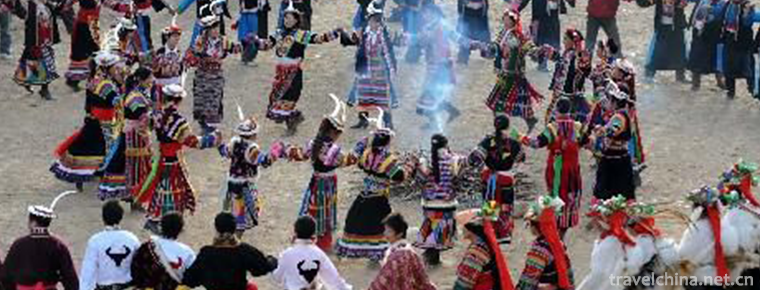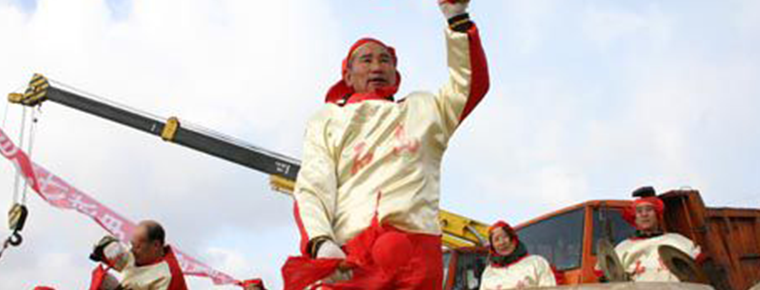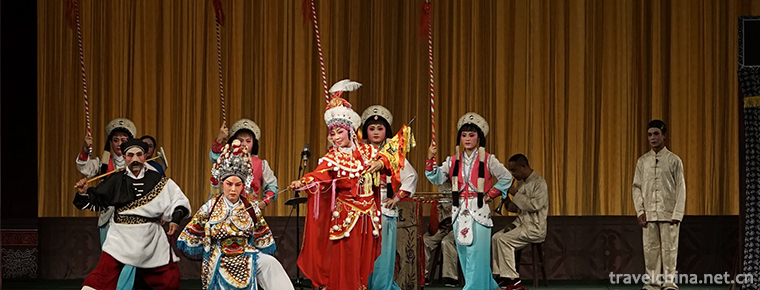Mingyue Mountain
Mingyue Mountain: National tourist resorts, National Scenic spots, national AAAAA tourist attractions, National Forest parks, national geological parks, National Natural heritage, home of hot springs in China.
Mingyue Mountain is located in the central part of Western Jiangxi Province, which is called "Livable City of China", "National Garden City", "National Health City", "National Green Model City" and "Excellent Tourism City of China". It is 15 kilometers southwest of Yichun City, with a tourist area of 136 square kilometers.
Mingyue Mountain is composed of 12 large and small peaks over 1000 meters above sea level, and the main peak of Taiping Mountain is 1736 meters above sea level. It is a mountainous scenic spot with the main features of "Qifeng Dangerous Valley, Hot Spring Falls, Rare Animals and Plants and Zen Culture" and integrates "Eco-tourism, Leisure Holiday, Popular Science Education and Religious Tourism".
"Leshan is a benevolent man, Leshan is a wise man." Many historical celebrities have visited the Mingyue Landscape, leaving behind such as Han Yu, a great writer of the Tang Dynasty, "No Yichunyuan, many rivers and mountains are worth visiting." Zhu Xi, a Dali scholar of the Southern Song Dynasty, "I travel in Yichunye, looking around many strange mountains." Xu Xiake, a famous geographer in the late Ming Dynasty, saw the sunshine like gold, and tourists walked among colorful clouds." And so on many popular and moving poems.
Mingyue Mountain Tourist Area is located in the central part of Western Jiangxi Province. It has "Livable City in China", "National Garden City", "and"Landscape City in China".
Qingyun Trestle Road, China's Seven Most Dangling Trestle Road (14)
The national health city, the national green model city and the 2010 best leisure and health city in China are 15 kilometers southwest of Yichun downtown, with a tourist area of 104 square kilometers. The scenic spot consists of 12 large and small peaks over 1000 meters above sea level, and the main peak of Taiping Mountain is 1735.6 meters above sea level. Mingyue Mountain Scenic Spot integrates mountains, rocks, forests, springs, waterfalls, lakes and bamboo seas. It combines majesty, wonder, seclusion, danger and beauty. It has five national title laurels: National Scenic Spot, National AAAAA Scenic Spot, National Forest Park, National Geological Park and National Natural Heritage. It is also the national demonstration base of self-driving tour and the best in China. Influential Forest Park and the first batch of self-driving tourism statistics data collection points in China are a mountain scenic spot which integrates eco-tourism, leisure vacation, popular science education and religious tourism.
Moon culture
Mingyue Mountain is famous for its moon. Moon culture is the soul of Mingyue Mountain and Mingyue Mountain. Mingyue Mountain combines the moon cultural landscape with the natural landscape organically, forming the scenic blending pattern of "there is a moon lake on the mountain, the Moon Bay under the mountain, and the moon scenery along the way reflects the moon sentiment everywhere". From the Moon Bay to the moon lake, we can experience the romantic feelings of the moon: the meeting of the moon square, the meeting of the lotus pond before the moon, and the meeting of the lotus pond before the moon. Moon-chanting monument forest, bamboo forest moon shadow, moon bridge, moon Pavilion in love, immersed in the moon pool border seal, the old people under the moon, moon altar oath, dream moon villa embrace each other, the moon is everywhere, this is the brightest. In the Mingyue Mountain, you can enjoy the unique "the moon travels in the mountains, the mountains are bright in the moon" wonderful mood.
Natural scenery
Mingyue Mountain is a subtropical wet monsoon climate with unique mountains and waters and mild climate. The annual average temperature is about 12 ~15 ~C. The annual average precipitation is 1800-2000 mm. It is suitable for the growth of various animals and plants. It is known as the "Natural Animal and Botanical Garden". Because the original features are well protected and the vegetation is flourishing, the content of negative ions in the air is as high as 70,000 per cubic centimeter, which is 35 times the national standard and can be called "natural oxygen bar". There are more perfect scenic spots in Youtan, where thousands of hectares of bamboo sea are green and delightful, traveling through the hearts of bamboo forests. The scenic spots have five cascades of different shapes and different characteristics. Among them, the "Yungu Falls" are 119.57 meters in length, the highest waterfall in Jiangxi, and the "Linglong Waterfall", "Fish Scale Waterfall" and "Yulong Waterfall". Waterfalls and "Flying Training Waterfalls" have their own characteristics and are very beautiful.
Zen culture
In the first year of Huichang in Tang Dynasty (841), Hui Jing, founder of Fengyang Sect, one of the five schools of Buddhist Zen, founded Qiyin Temple (Taiping Xingguo Temple) in Yangshan Mountain of Mingyue Mountain. Since then, Buddhist activities have lasted for more than a thousand years, and Fengyang Zongfeng has spread all over the world. It has become a scenic spot of ancient Buddhist jungle in China. Buddhist monks from India, Sino-Luoguo (now Korean Peninsula), Japan and other countries have come to learn and visit numerous tourists. In the past, famous people often visited and left many inscriptions on tablets and cliffs. The thousand-year-old ginkgo tree still alive on the old site of the ancient temple and more than 100 Buddhist monks'relics in Tang, Song, Ming and Qing dynasties around it witnessed that period of history. All laws are unified, and drinking water is the source of thought. In order to renovate and restore Qiyin Temple and rebuild the vitality of Buddhism, Qiyin Zen Temple was rebuilt and completed in September 2011 under the initiation and chairmanship of Master Yicheng, former president of the Chinese Buddhist Association. The scenes of Xiangyun winding around Baosha and Zhongkun replicating in the valley of Yangshan Mountain are presented. The completion of the International Hot Spring Zen Center will make Yangshan a tourist resort where tourists wash dust with hot springs and purify their souls with Zen Buddhism.
cultivation culture
The ancient and honest Mingyue Mountain farming culture has a long history, and the term "terrace" originated from the Yangshan Mountain of Mingyue Mountain at the earliest. Tiangong Kaiwu, known as the Encyclopedia of the seventeenth century, is an encyclopedia of ancient agricultural science and technology in China. The author, Song Yingxing, is a new man in Yichun. The construction of the opening zoo built under the Mingyue Mountains has built Song Yingxing's Tiangong Kaiwu into an exhibition of ancient agricultural science and technology, participation of traditional handicraft production, and in the middle. The national farming culture is an experiential paradise. There are three main halls: exhibition hall, tour participation hall and performance exhibition hall. The purpose of deducing ancient agriculture and handicraft science and technology civilization in modern way is to fully tap the rich farming culture of Yichun, and combine modern tourism, so that tourists can learn from pleasure, from pleasure and from pleasure. Mingyue Mountain Tourist Area combines the moon culture with Zen culture and farming culture organically, creating a landscape cultural artistic conception of the integration of mountains and moons, the connection of Zen and moons, the mutual imprinting of spring and moon, the interesting farming and moonlight, and the joy of people and moonlight, which is another bright pearl of Jiangxi tourism development.
Overview of scenic spots
"The bright moon is everywhere, the most bright moon is in Yichun," the ancients once wrote in their poems. Mingyue Mountain, located in Yichun City, is one of the birthplaces of this strong moon culture. Mingyue Mountain, named for its "Stone Night Lights like Moon", has beautiful scenery such as bamboo sea, waterfall, Songtao, Qifeng and so on, which makes this famous mountain "step by step to pick up beautiful scenery, one mile different from the sky". According to the mythological and epic records, Mingyue Mountain is the hometown of Chang'e and the place where Chang'e flew to the moon at that time. Therefore, Yichun has the reputation of "the capital of the moon" and "the city of the moon".
Under the advocacy of the municipal government, Yichun City has successfully registered the trademarks of "Moon City" and "Moon City" in September 2008, and has registered the domain name. With the global live broadcast of the 2009 CCTV Mid-Autumn Festival Gala "Yichun Moon Chinese Love" CCTV large-scale Mid-Autumn Festival Gala, Yichun, known as "Moon Culture", has become a well-known "capital of the Moon" in the Chinese world.
Mingyue Mountain is mainly composed of more than ten peaks over 1000 meters above sea level, such as Taiping Mountain, Yujing Mountain, Laoshan Mountain and Yangshan Mountain. The main peak of Mingyue Mountain is Taiping Mountain. The main peak is 1735.6 meters above sea level. Because the whole mountain is semi-circular, just like the half moon, it is called Mingyue Mountain. The mountains of the bright moon are magnificent and magnificent, with various forms. Some are famous for their beauty, some for their majesty, some for their dangerous peaks, and some for their quiet victory. The scenery of Mingyue Mountain is precious in nature. The vast sea of clouds, mountains and fields, Tianchi, monkeys, there are "amazing wall, strange rocks, Pine Douyan, mountain flower brocade" four unique, famous for peaks, waterfalls, caves, stones. Within the territory of mountains and mountains, strange rocks stand in the forest; beautiful mountain flowers, pines arrogant. Birds and animals everywhere, flowers and birds, moss, springs and waterfalls everywhere, such as into fairyland, have the reputation of "resembling Huangshan".
The scenic spot consists of eight parts: the scenic spot under the pool, waterfalls flying, bamboo sea thousands of hectares; Qingyun scenic spot, Tianchi Trestle Road, Chang'e flying to the moon; Wentang vacation area, Selenium-rich hot springs, health and recuperation, Huaxia unique; Yangshan scenic spot, Fengyang Zuting, Millennium Terraces; Taiping Mountain scenic spot, Yunzhong grassland, snow sunrise; Huamulian scenic spot in Yujing Mountain. District, exotic flowers and trees, ancient trees towering; eighteen rows of scenic spots, alpine trains, thousands of walls; Hongjiang scenic spot, Lanruo ancient village, radon spring meditation.
Mingyue Mountain is a subtropical humid monsoon climate with unique mountains and waters and mild climate. The annual average temperature is about 12 ~15 ~C, and the annual average precipitation is 1800-2000 mm. To adapt to the growth of all kinds of animals and plants, known as the "natural zoo" and "plant kingdom", the territory of the mountains is quiet and fragrant, invincible in all seasons, Maolin bamboo repair, cloudy mist roll, fog condensed into rain, cloudy springs, mountains and valleys springs continue to sound, the scenic area green onions, fresh air, mountain air negative ion content as high as 70,000 per cubic centimeter. Thirty-five times the national standard, it is a famous natural oxygen bar both at home and abroad.
Mingyue Mountain is a National Forest Park and provincial scenic spot, located in Yichun, the first ecological city in China. Because the whole mountain is half moon, it is called Mingyue Mountain. It belongs to subtropical humid monsoon climate, adapts to the growth of various animals and plants, and has rare plants such as Taxus chinensis, Manglietia chinensis and hot springs rich in selenium in hot soup. The main features are Qifeng and Dangerous Valley, Hot Spring and Falls, Rare Animals and Plants and Zen Culture. Located 31 kilometers southwest of Yuanzhou District, Yichun City, Jiangxi Province, it is a mountainous scenic spot integrating "ecological tourism, leisure vacation, popular science education and religious tourism".
The mountains of the bright moon are magnificent and magnificent, with various forms. Some are famous for their beauty, some for their majesty, some for their dangerous peaks, and some for their quiet victory. The scenery of Mingyue Mountain is precious in nature. The vast sea of clouds, mountains and fields, Tianchi, monkeys, there are "amazing wall, strange rocks, Pine Douyan, mountain flower brocade" four unique, famous for peaks, waterfalls, caves, stones. Within the territory of mountains and mountains, strange rocks stand in the forest; beautiful mountain flowers, pines arrogant. Birds and animals everywhere, flowers and birds, moss, springs and waterfalls everywhere, such as into fairyland, have the reputation of "resembling Huangshan".
Here spring is green, summer is shady, autumn is golden valley, winter is everywhere Jade Tree and Honeysuckle. Mingyue mountains and rivers are unique, the climate is mild, known as the "plant kingdom" reputation. There are not only medicinal materials such as rock ginseng, stone ear, muntjac, roe, snake, wild boar, monkey, pheasant, rabbit, fox, doll fish and so on, but also flowers and trees such as pines, bamboo, cypress, camphor, cedar, ginkgo, magpie and willow, named Mingyue Mountain. Taxus chinensis var. mairei, which originated 230 million years ago, is rich in paclitaxel. It is a rare plant in China and Manglietia chinensis is a rare plant in the world. There are only two of them, which are unique to Mingyue Mountain. At the end of the year, the project of Songcheng Mingyue Thousand-Year-old Scene Area is in full swing, and the construction of the Thousand-Year-old Love Theatre is progressing smoothly. The total investment of this project is about 1.4 billion yuan, and it is expected to be put into trial operation at the end of the year. The Mingyue Mountain Scenic Spot has rapidly promoted the construction of major tourism projects, continuously enriched the tourism pattern, and promoted the high-quality development of national tourism resorts.
Mingyue Mountain tourism projects focus on gathering popularity and enriching the entertainment industry. Songcheng Mingyue Thousand Years Scene Area project has three main lines of culture, performing arts and experience, which will create a leading performing arts project in the province; Gujingquan Street, which invests 1.2 billion yuan, will build a one-stop cultural tourism complex with the theme of "Selenium feeding slow life"; and Paraglider Flight Experience Base, which invests 100 million yuan, will bring more entertainment to tourists. New experience.
In order to meet the different accommodation needs of tourists, Mingyue Mountain has introduced the Intercontinental Hotel with an investment of 200 million yuan, Hengjing Hot Spring Hotel with an investment of 300 million yuan, as well as the Vienna Resort Hotel, Hot Soup Shangpin Hotel, Hot Soup Yiquan Bay Hotel and turf hotel with high-end residential projects. At the same time, the project of Mingyueren and mineral water and nutritional water with an investment of 500 million yuan was introduced, and a number of projects such as Swan Lake Hot Spring Health Valley with an investment of 100 million yuan were invested to extend the hot spring industry chain and enhance the added value of hot soup selenium-rich hot springs.
Mingyue Mountain has also built a number of rural tourism projects, including 24 Bridges Mingyue Garden Complex, Jingfu Eco-Park and Cherry Valley Phase II, which have been rapidly promoted to speed up the upgrading of rural tourism and promote the development of tourism in the whole region.
Historical culture
Mingyue Mountain has a long history and rich humanistic landscape, which is the place where religion and culture multiply in China. As early as the reign of Liu Heng, Emperor Wendi of the Western Han Dynasty, there was the "Yangshan Ancient Temple", which was the famous incense place of Yangshan Dragon King in ancient times, and the birthplace of Dragon King Bodhisattvas all over the country. During the Wei and Jin Dynasties, Ge Xuan and Ge Hong, the ancestors of Taoism, were successively practicing immortality and alchemy at Jiyun Peak in Yangshan. In the first year of Huichang in Tang Dynasty, Huijing Zen Master, one of the five schools of Zen Buddhism in China, founded Qiyin Temple (Taiping Xingguo Temple) in Yangshan. Since then, the Buddhist activities of the temple have lasted for more than 1000 years, and the Fengyang sect style has spread all over the world. It has become a scenic spot of ancient Buddhist jungle in China. There are numerous monks at home and abroad who come to study and visit the temple. On both sides of the site, more than 100 Zen monk tombs have been found in Tang, Song, Ming and Qing dynasties.
Many historical celebrities, such as Han Yu, Zhenggu, Lu Xisheng, Zhang Shangying, Xin Qiji, Fan Chengda, Huang Tingjian, Zhu Xi, Xu Xiake, Yan Song, have visited the Mingyue Mountains and rivers. They either prayed for rain, or hung crowns to hide, or visited friends to explore the source, or lectured, or inspected the landforms of mountains and rivers. They have left behind many excellent works. In addition, Mingyue Mountain is also a red revolutionary resort. From April to May 1936, the Secretary of the Central Hunan and Jiangxi Provincial Party Committee and Chairman of the Military and Political Committee, together with Comrade Tan Yubao, the Political Committee of the Hunan and Jiangxi guerrillas, led the provincial Party Committee organs, the teaching team, the secret service team and the central County Committee of Ping (township) Yi (spring) An (Fu) to join forces in the battle to Mingyue Mountain and enter Ruiqing Temple and pioneering ground under the Ruiqing Pagoda. Training, expanding the armed forces, fighting against the enemy, and achieving brilliant results, there are "Ruiqing Tower Union" poems: visiting Biming Mountain, exploring wonders, admiring scenery, Dangdeng Ruiqing Natural Tower; looking at the Red Army's garrison, debating the merits of the war, with grandeur, Cui Wei's monument should be erected.













-
Water surface
The water surface is a traditional snack in Shaanxi and Gansu Province. Legend has it that Liu Bang, the ancestor of the Han Dynasty.
Views: 498 Time 2018-11-02 -
Bao Zhai village
Baoqiao Village, formerly known as Baoqian Mountain and Qishan Mountain, is located in Luquan District of Shijiazhuang City, 16 kilometers away from Shijiazhuang, the provincial capital.
Views: 195 Time 2019-01-02 -
Guanlan Mountain and Water Pastoral
Shenzhen Guanlan Mountain and Water Pastoral Tourist Park covers an area of 300,000 square meters. It is located in Guanlan Street, Longhua District. It integrates food, housing, hot springs.
Views: 124 Time 2019-01-13 -
Huaian Government Office
Huai'an government office is located in Huai'an City, Jiangsu Province, which is a national AAAA tourist attraction. It is located in Dongmen Street, Huai'an District, the old city of Huai'an, north o.
Views: 91 Time 2019-01-17 -
Panda Dance
Panda dance is a traditional dance originating in Jiuzhaigou County. Every year on the 15th and 16th of the first lunar month, some of the Baima Tibetans wear panda masks to exorcise evil spirits. .
Views: 112 Time 2019-04-26 -
Jiaodong drum
Jiaodong Drum is a folk folk folk art form which originated in the coastal counties of Jiaodong Peninsula. It has a history of more than 260 years so far. It originated from the blind.
Views: 316 Time 2019-05-06 -
The Legend of Shun
Shun was born in Zhufeng Village, Yongji County. His surname is Yao and his name is Chonghua because of his double pupils. Soon after his mother gave birth, he died. His father married a stepmother an.
Views: 128 Time 2019-06-16 -
Siping Opera
Siping Opera, also known as Sijuan Opera, Siping Opera, Sipeng Opera and Sipeng Opera, is popular in Pingnan County, Zhenghe County, Fujian Province. It is one of the national intangible cultural heri.
Views: 105 Time 2019-06-16 -
Month also
Dong people's "moon" means collective visiting, which is a social custom in Dong village. The young men and women in one village of the Dong nationality visit another village according to th.
Views: 329 Time 2019-07-16 -
Beijing University Of Technology
Founded in 1960, Beijing University of Technology is a multi-disciplinary municipal key university with a combination of engineering, science, economics, management, literature, law, art and education.
Views: 339 Time 2019-09-06 -
The situation of Chinese embroidery in various historical dynasties
The origin of Chinese embroidery is very early. It is said that "Shun ordered Yu to embroider multicolored embroidery". It was developed in the Xia, Shang, Zhou Dynasties and Qin and Han Dynasties. From the early unearthed textiles, embroidery .
Views: 219 Time 2020-12-12
